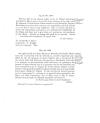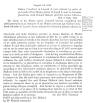|
Transportation
Extracts from the records of the Edinburgh Tolbooth (The Book of the Old Edinburgh Club Vol V, VI )
Transportation took place for civil crimes, prisoners of war, as well as for Covenanting activities and rebellion, with prisoners being sent as slaves for sale, and as bondsmen having given themselves to labour for a given period to pay for their passage. The latter was akin to slavery in many cases. The main destinations were the West Indies, often Barbados; and the American plantations. The lands were so large and population sparse that a common problem for the new `plantations` was insufficient labourers. Various attempts were made to overcome this by transportations, while slave labour was recognised and negro slavery the norm in 1619.
The first Virginia settlement at Jamestown in 1607 was of a hundred persons under Sir Thomas Gates and Company with authority to plant two colonies, a northern one and a southern one. This was taken over by the London Company in 1609. In 1624 Virginia became a `royal` colony.
In November 1620 James I chartered the Plymouth Company for “planting, ruling, ordering and governing of New England” – the six states in the north east of America (USA) -Maine, New Hampshire, Vermont, Massaschusetts, Connecticut and Rhode Island.
New Jersey was founded by a company of adventurers led by Philip Carteret in August 1665, with his headquarters at Elizabethtown. The state was divided into two parts – East and West. The eastern part was sold to and settled by Quakers
North Carolina was founded as a colony by Charles II in 1663 with land granted to a company of English noblemen; a few years later South Carolina was annexed. The terms of land rents etc were so generous for the times that there was a large influx of Quakers and other Dissenters. In 1682 a proposal made by Sir John Cochran of Ochiltree and Sir George Campbell to set up a Scottish settlement was enthusiastically endorsed by the king.
The Royal African Company , in 1676 headed by the Duke of York, was granted a charter for the exclusive supply of negro slaves to Jamaica and other West Indian Islands.
Jamaica was a Spanish colony for 161 years before the British took it in 1653. Cromwell sent many prisoners to the new plantation. The first sugar to be sent to England was in 1673 when it was recorded that there were 7,768 white persons and 9,504 negroes on the island.
Barbadoes was first visited in 1605 when the crew of the ship Orange Blossom landed there. The earliest settlement, however, dates from 1625. when thirty settlers established Jamestown, with Captain William Deane as Governor. This was the first English colony which planted sugar cane and by 1683-4 a census revealed there were 17,187 free persons, 2,381 not free ( being mainly prisoners of war and indentured persons, ) and 46,602 slaves.
To some extent the authorities in Scotland did not care too much once the prisoners had been embarked and out of their charge. Prisoners were often released into the charge of merchant venturers – slavers in other words, who would sell them off at the destination. Sometimes the prisoners were `gifted` by the King to a plantation owner, to whom they would be delivered. The system was liable to abuse as destinations would be changed depending on the weather and prevailing winds. Greed also played a part as the price of slaves varied (usually around £10 sterling) , and vessels might divert to where the price was best. A change of destination was mooted in the case of the “Henry & Francis” but the weather finally forced the ship to go to its original destination at Perth Amboy, New Jersey.
George Hutchinsone, a merchant in Edinburgh, contracted to take prisoners to Barbados in December 1665. The government saw it as an opportunity to clear the prisons, and some of the inmates saw it as a way of avoiding the hangman`s rope if they stayed.

Two Dumfries men, Robert Bartone and George McBurney were sentenced 29 June 1665, to be transported to Zetland (Shetland), possibly as conscripts or as building workers on a new castle being built at Bressay. Colonel Sinclair had been appointed Governor of Shetland and probably needed workers.

Robert Armstrang and Anthony Pott, transported to be sold as slaves in Barbados, 17 April 1666.

Transportation on the “Phoenix”, Captain James Gibsone, bound “God willing” for Virginia, 4 May 1666. Before this a general notice was issued that led to a clear out of some prisons – an occasion for ridding a town and the tolbooths of idle vagrants and the like.

Thirty one prisoners were transported 15 November 1679. Leith vessels were regularly plying with the West Indies and Virginia.

A voluntary transportation (in lieu of wasting away in prison ) for Calum McGrigor, transported to Barbardos, 2 August 1680

another prisoner , Alexander McKinnon, sent on the same ship

William Cunynghame, Wm. Craige and James Stivensone for transportation to Flanders 28 March 1684

A general enactment of 5 June 1684,in favour of Robert Mulloch, ( or Malloch) merchant adventurer, to transport “idle vacabonds, whoores & theifs incarcerat within yr tolbooth & correction hous which are a burden to ye good toune”. The ship at this time was bound for the Carolinas.

Three for the Carolinas

More transportations to America.
|